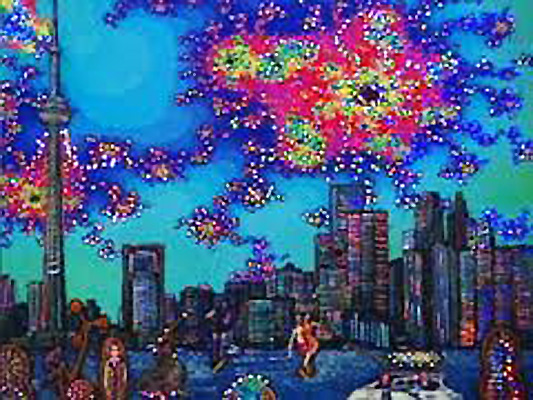(1950 — )
Over 20 years ago, when Menno Krant was in his early 40s, he was homeless, and lived in his car for a year. Time dragged and he started to doodle while he sat in the car in the dark. Later he started painting with anything on hand, and on any discarded material he could find, like cereal boxes and cigarette packages. Krant paints all day, every day. He uses whatever paint is at hand, and whatever recycled materials are around. Painting is vital to him. It’s self-nurturing. He has thousands of paintings in his home.
Krant stays away from the commerce of the art world. He doesn’t like to go to his own exhibits, he doesn’t like publicity, and he doesn’t like most art dealers. There are very few pictures of him on the Internet. His neighbours don’t know he is an artist.

































